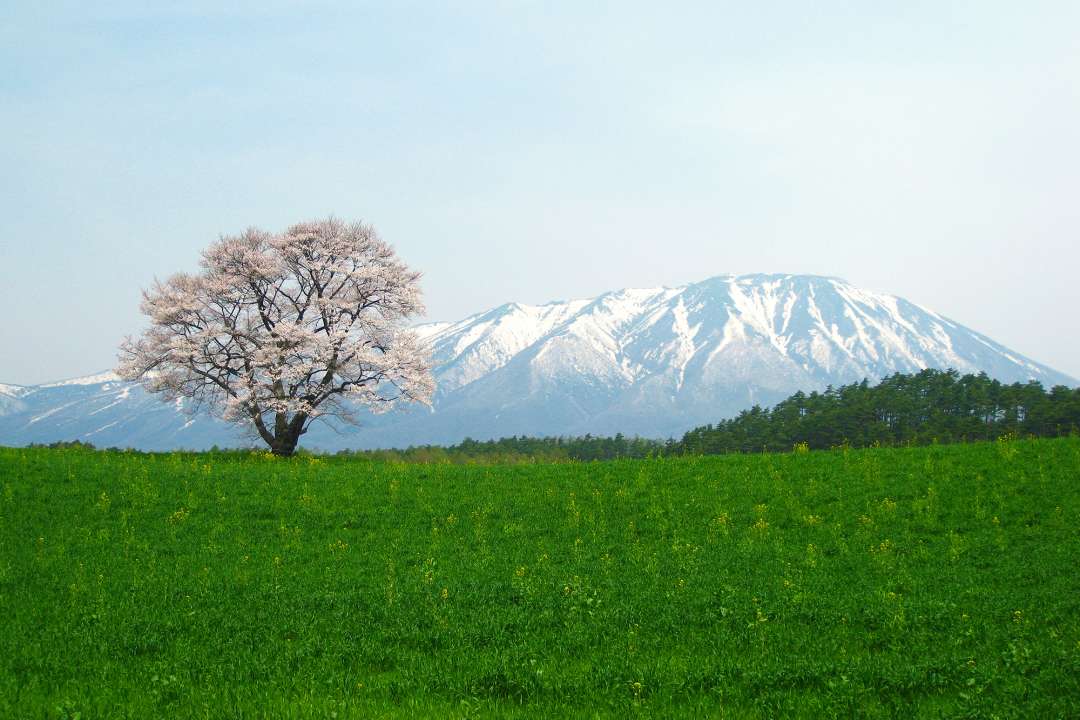
A large prefecture on the Pacific Coast in the Tohoku region, Iwate is a former cultural and political centre of northern Japan with several surprises hidden up its sleeve.
Everybody wants to visit Kyoto’s famed Golden Pavilion at Kinkakuji Temple, flamboyantly clad in splendid gold leaf, but did you know that you can see a similar temple, the Konjikido Hall, in the city of Hiraizumi in Iwate? In its glory days in the 12th century, Hiraizumi was the cultural and political capital of northern Japan - you might be surprised to learn that it once rivalled even Kyoto in terms of power and majesty.
That’s not all - Iwate’s scenic 280 km long Sanriku Coast, full of dramatic clifftops and plunging shorelines, was badly hit by the tsunami in 2011, but is making a good recovery and offers almost endless opportunities for things to see, do, and eat, whether natural, religious, or historical, from mammoth underground caves and geologically unusual beaches to a 50m tall Buddhist statue and the oldest iron blast furnace in Japan.
Meanwhile, Morioka, Iwate’s prefectural capital, is home to what is perhaps one of the most bizarre eating challenges in the world - the Wanko soba challenge. Bite-size portions of soba noodles are served one-by-one in tiny bowls and diners are challenged to eat as many as their stomach can hold - no time limit is imposed, so the race is as long as your stomach is large!
1. Visit a Golden Temple in Hiraizumi

Chusonji Japan’s former northern capital, Hiraizumi was once a cultural and political powerhouse to rival even Kyoto, the then national capital of Japan. Chosen by the powerful Fujiwara clan as the seat of its northern branch in the early 12th century, the town grew in size and importance and enjoyed a golden age lasting nearly a century, until it was razed to the ground in the late 1200s. Sadly, the city never recovered its former prominence and power, but it is home to some of the Tohoku region’s most precious cultural, religious and historic properties, and should not be missed off your list of places to visit when you venture north.
Chusonji Temple is Hiraizumi’s most famous temple. Founded in 850, at its peak the complex consisted of dozens of buildings, but now only two survive. Luckily however, one of the most spectacular did survive. Similar to Kyoto’s Ginkakuji Temple, Konjikido Hall is entirely clad in gold leaf and is so precious that it is now housed inside another building for its own protection.
Other must-sees in Hirazumi include Motsuji Temple, home to one of the few remaining Pure Land gardens in Japan, and Takkoku no Iwaya, a 9th century temple at the foot of a cliff, constructed in such a way that its building is partially in, on and under the overhanging cliff.
2. Take a Boat-ride down Geibikei Gorge
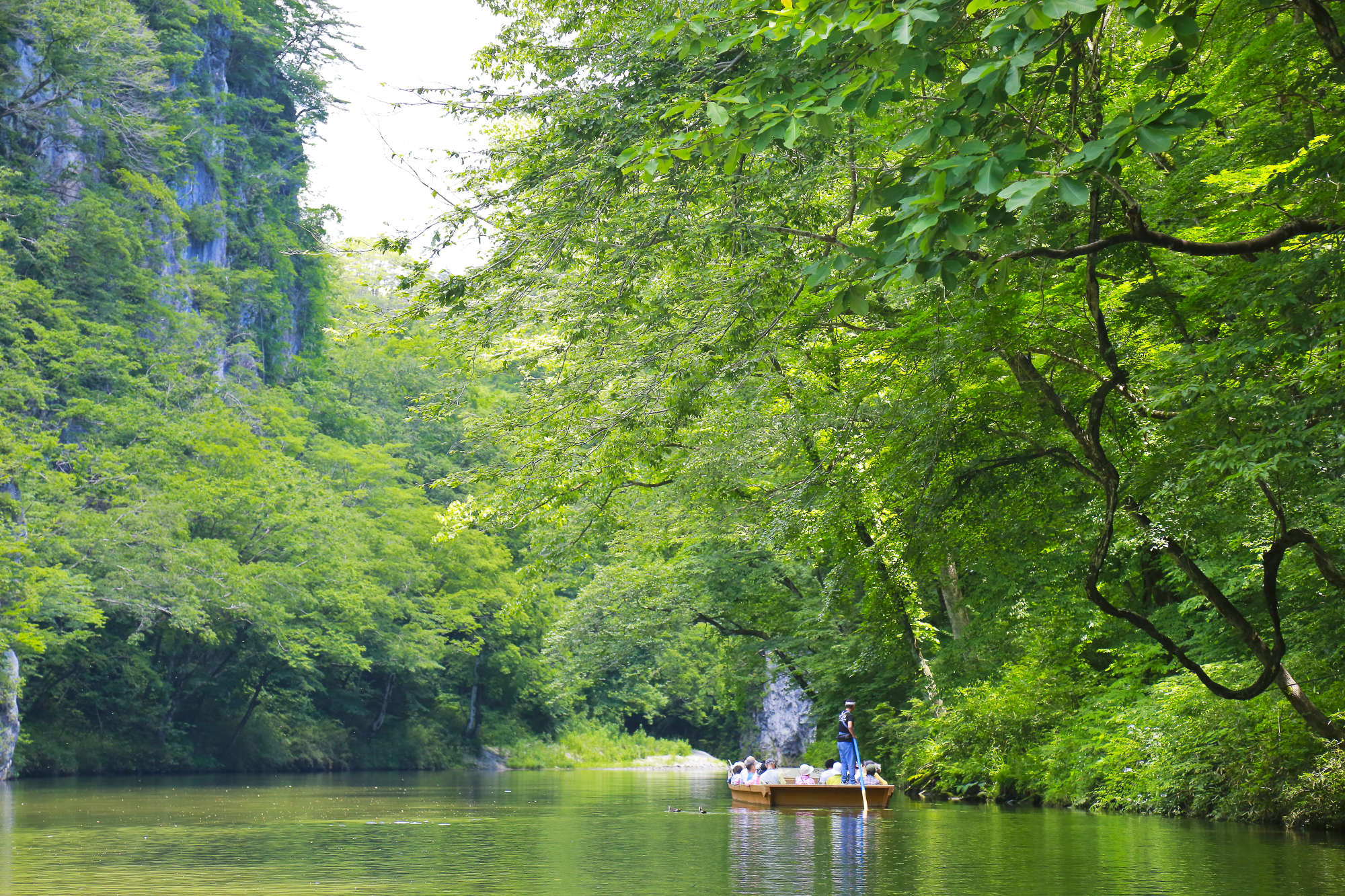
At the end of the gorge, clamber ashore and walk a few hundred metres further into the gorge to view the Lion’s Nose Rock for which the gorge is named. You can also try your hand at a fun game - buying small lucky white stones to throw into a small opening in the cliff on the other side of the river - if your aim is true and your stone goes in it is said you’ll be rewarded with good fortune.
The scenery in the gorge is especially spectacular at two points in the year: in mid May, when the wisteria flowers bloom, and during late October and early November, when the autumn foliage overhanging the gorge reaches its resplendent peak.
3. Take Morioka's Wanko Soba Challenge
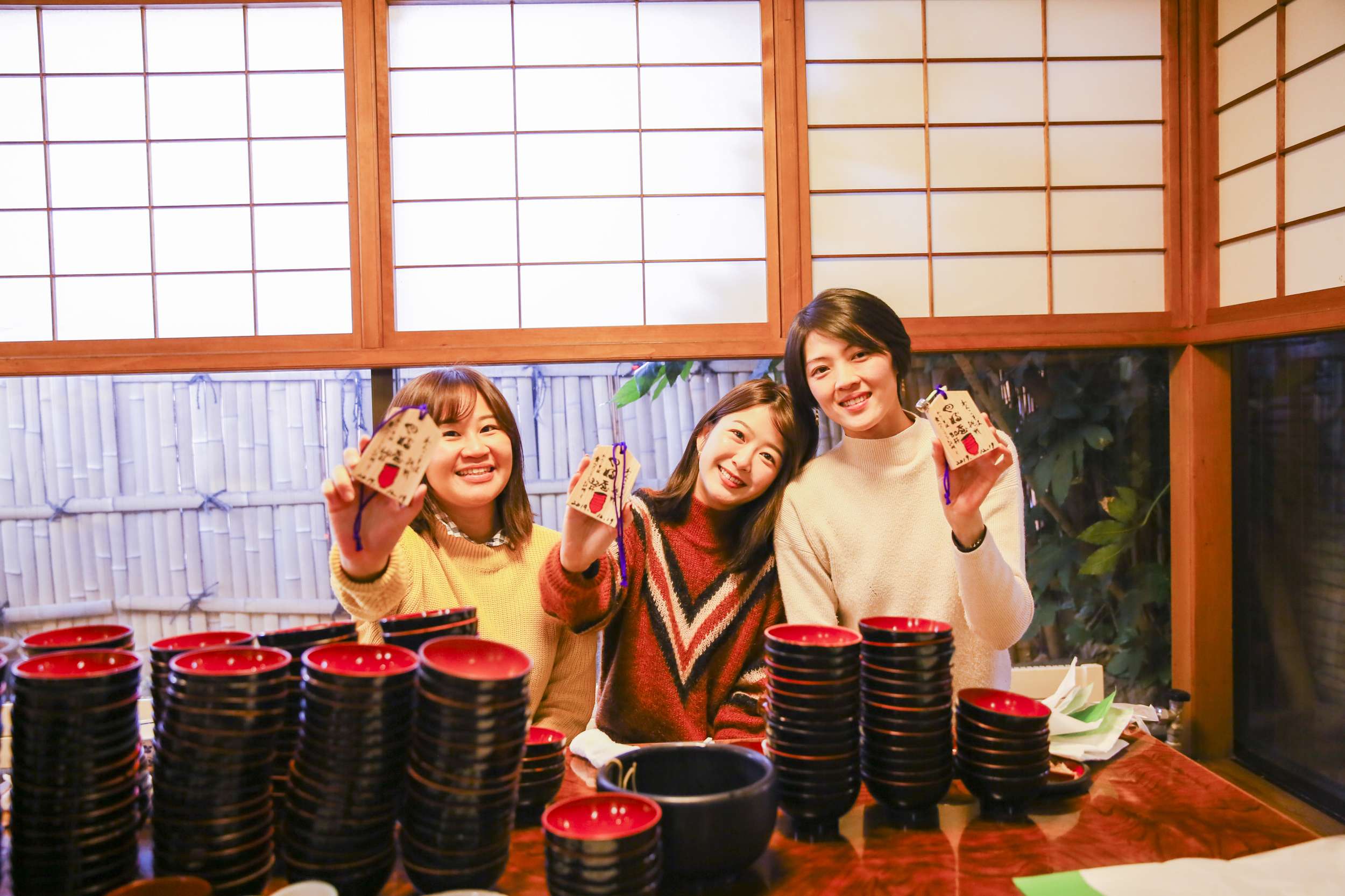
Morioka Reimen (cold noodles) was invented in 1954 by a restaurant owner from Korea who wanted to introduce a taste of home into his cooking. The dish features tangy cold soup made from beef stock and smooth glass noodles, but its standout point is surely the spicy kick from the kimchi! The dish comes with a variety of cooling toppings such as eggs, cucumber, apples, pears, and even watermelon, to counteract the effects of the kimchi. Most restaurants offer several levels of spiciness, so if you’re not partial to spicy food then try ‘betsukara’ (kimchi on the side).
Chinese food aficionados may have guessed from the name, but Japanese Jajamen has its roots in the Chinese dish Zhajiangmian. Thick, chewy Jajamen noodles, very similar to udon (wheat flour noodles), are topped with a scoop of tangy miso-y minced meat, sliced cucumbers and spring onions, for a dish that is both bursting with flavour and soothing on the tongue.
Finally, for the really brave there is the Wanko Soba challenge - an all-you-can-eat dining experience of Japan’s trademark soba (buckwheat) noodles. The idea is to chomp down as many of these small bowls of soba noodles as you can. Amazingly, there is no time limit - the only limit is the size of your stomach! The record for this crazy eating competition is astounding - 345 bowls in 5 minutes! Think you can beat it? Don’t get overconfident - few people manage longer than ten minutes.
4. Enjoy the Cherry Blossoms at Kitakami
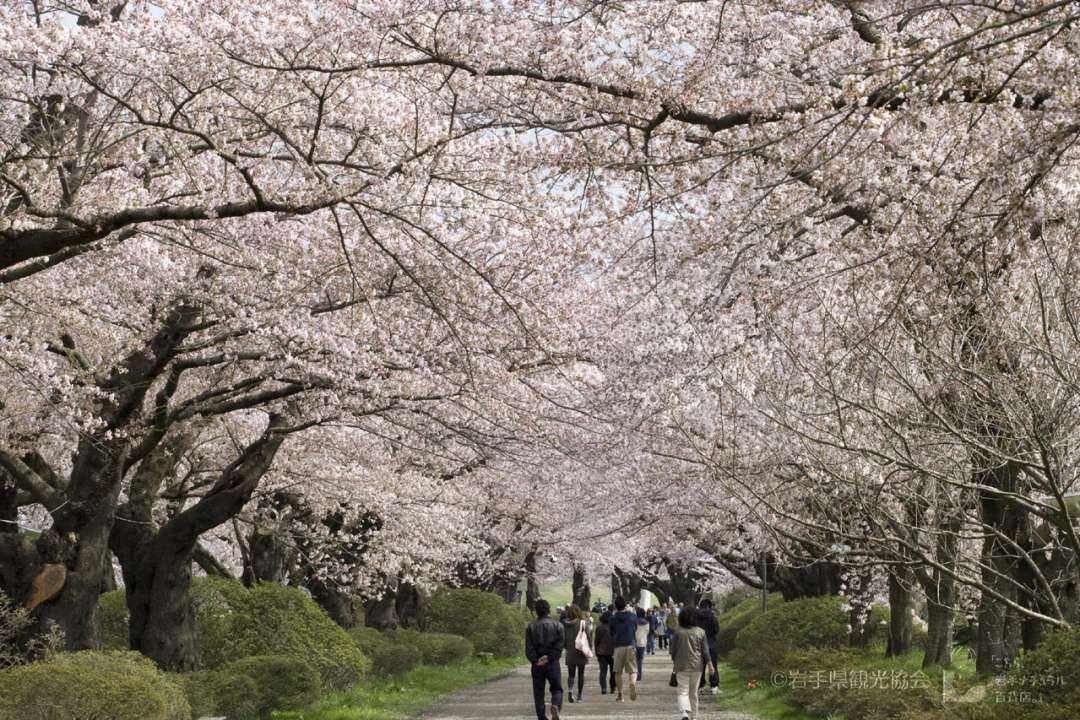
Kitakami is one of the most popular cherry blossom viewing spots in the Tohoku region. Catch the blooms at their peak in Tenshochi Park during the last two weeks of April. The park is a beautiful oasis of green and blue right next to the Kitakami River that runs through the town. There are around 10,000 cherry trees of over 150 varieties planted along the river, forming an eye-catching canopy of pink and white when they flower.
300 colourful koinobori carp kites are hung in the park from April until May to mark Children’s Day and illuminations light up the trees at night, so whatever time of night or day you visit, you are guaranteed to find a feast for your eyes. This is one of the best cherry blossom viewing spots in Tohoku, so if you’re sick of battling the crowds in better-known locations such as Kyoto, then this is where you should head instead.
Best of all, the park offers multiple methods for enjoying the blooms. Walk the 2km riverside footpath, stopping for a browse at food and festival stalls at either end of it before or after your promenade. Save your feet and hitch a horse-drawn cart ride on one of the red-roofed horse and carts you’ll see plying their trade along the path.
Bonus - Michinoku Folk Village

Spare time? Pop into the Michinoku Folklore Village and get a glimpse of traditional life as it used to be in the Tohoku region. The village is an open air museum displaying 30 preserved farmhouses and other buildings gathered from around the Tohoku region amid forested walkways, fields and ponds. The buildings date from various different historical periods; most of them can be entered and house displays of various household items and farming tools.
5. Explore Iwate’s Scenic Sanriku Coast
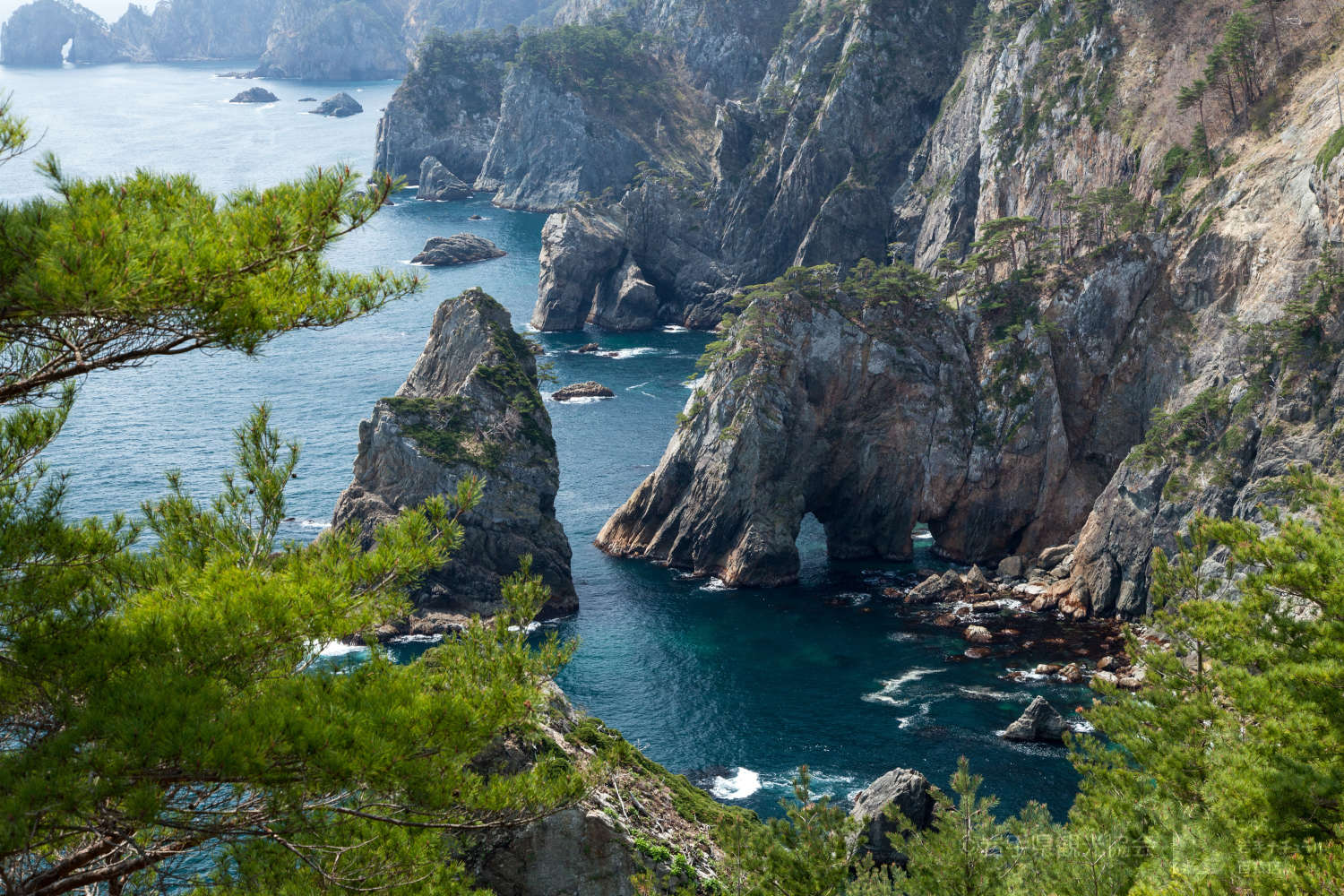
1. Jodogahama Beach - with its beautiful white pebble shore and calm clear waters, this beach is ranked as one of the 100 best beaches and swimming spots in Japan
2. Kitayamazaki Coast - the most spectacular section of the coastline, boasting 8 km of sheer cliffs up to 200 metres tall, inhabited by seabirds such as cormorants and ospreys
3. Goishihama Beach - an unusual, photogenic beach named for its carpet of smooth, black stones which resemble the round, black counters used in Go, a traditional Japanese board game
4. Kamaishi City - the birthplace of Japan’s modern iron industry, Kamaishi is home to Japan’s first blast furnace and has been producing iron ore since the late Edo period (1600s)
5. Kamaishi Dai-Kannon Statue - an eminently Instagrammable location, you can also climb up inside this 50 metre tall statue of Kannon, the Buddhist goddess of mercy
6. Ryusendo Cave - explore 700 metres of this sprawling limestone cave, which extends nearly 5000 metres into the mountainside and even houses an underground river and four lakes
6. Grab an ‘Ekiben’ and Ride the Sanriku Coast

Bonus - Feast on a Sanriku Ekiben (boxed lunch)
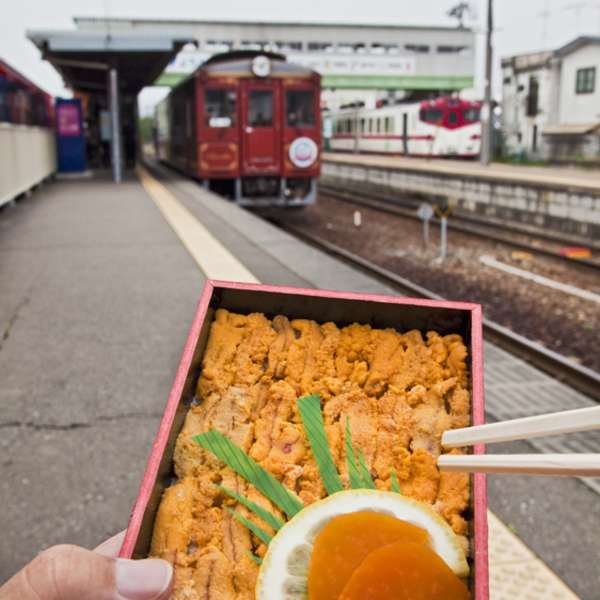
One of the pleasures of train travel in Japan is ekiben, Japanese boxed lunches, designed to be eaten on the train, which often feature produce local to that region. It may come as no surprise after viewing that long, scenic coastline, but Iwate’s specialty is seafood, and so the Sanriku railway offers a choice of mouthwatering seafood bento to munch on while you travel.
On the Retro Train, there are four different types of bento that you can order, from premium black cod to a premium western style bento (bento must be reserved 2 days prior to travel).
On the Ozashiki Train, choose from hotate (clam), awabi (abalone) or uni (sea urchin). Or splash out for the Tairyo Funauta Gozen, which roughly translates as “the sailor’s song for a good catch”, and features a mountain of seafood artfully arranged in a lacquered boat-shaped dish (bento are only available for the 12:15 departure from Kuji Station, and must be reserved by 1pm 2 days prior to travel).
To stay up to date with all the latest happenings in Japan follow us on Facebook or Instagram!

















































